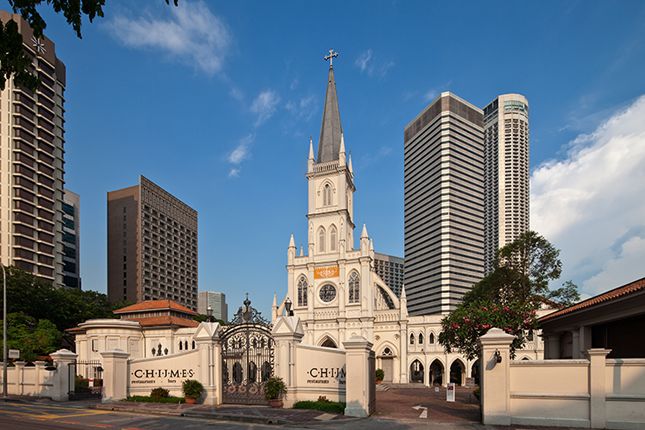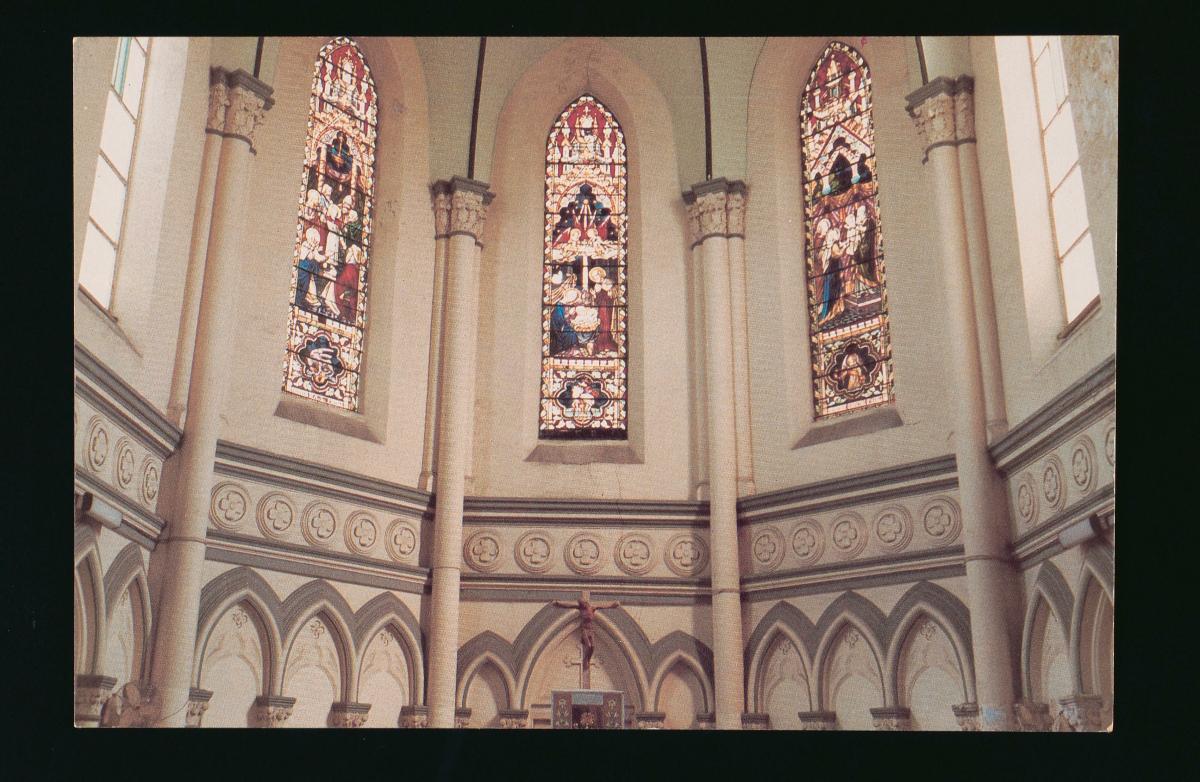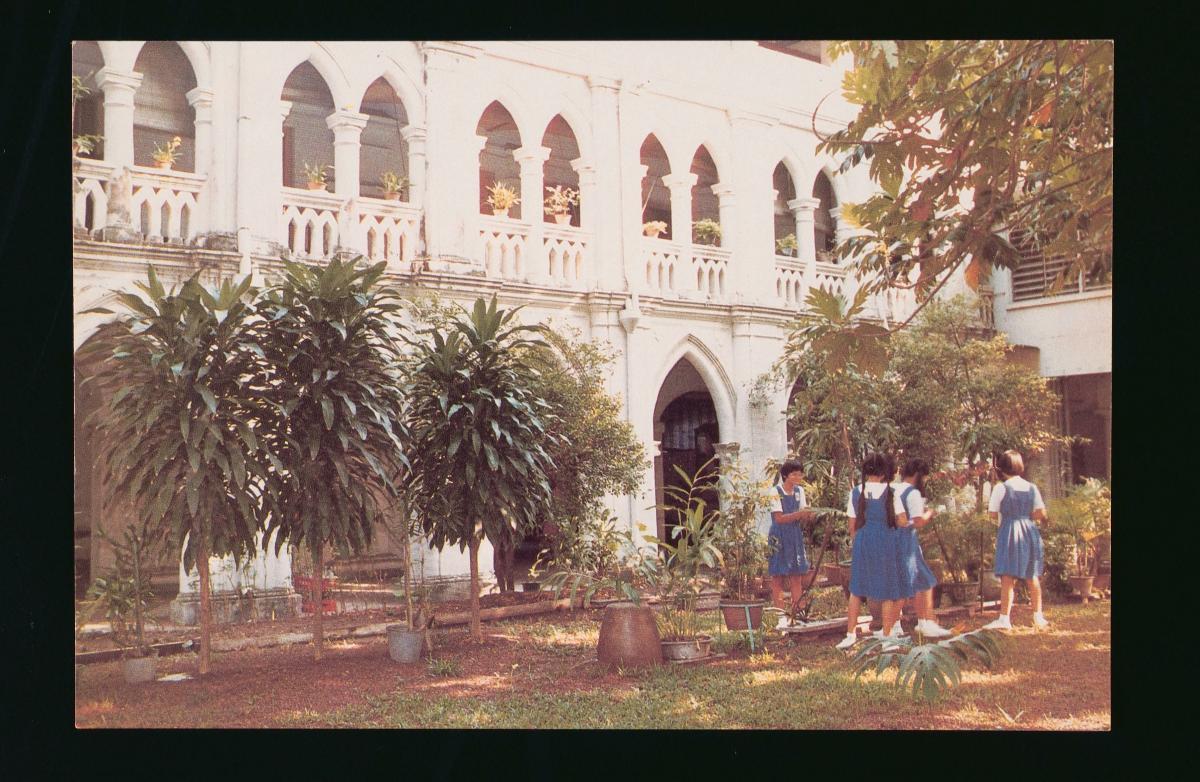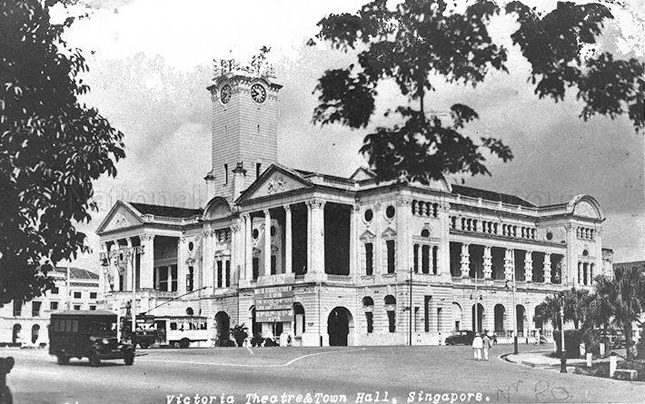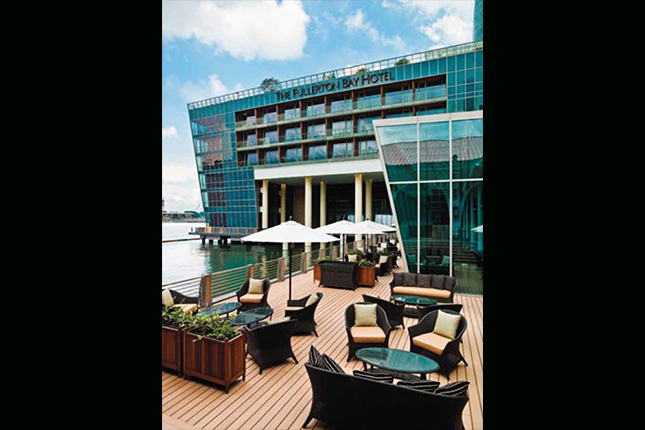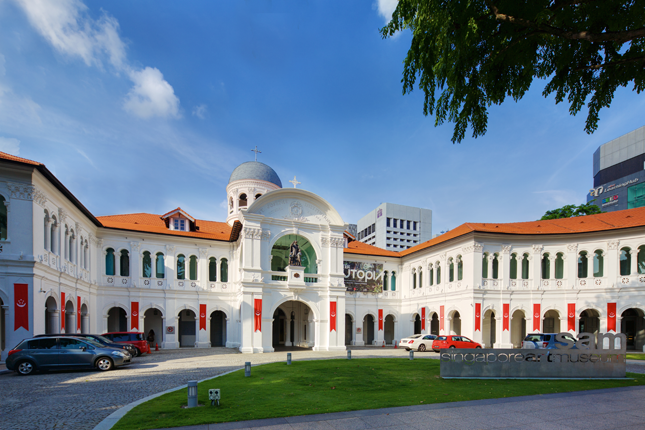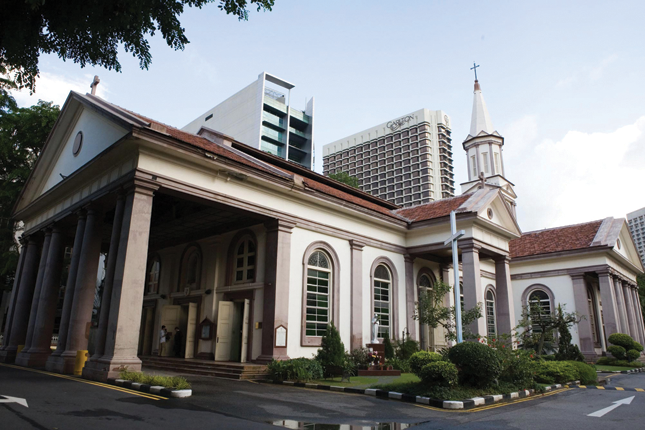Owing to its central location, the Convent of the Holy Infant Jesus was also affectionately referred to as the Town Convent in the past. It once housed the oldest Catholic girls’ school in Singapore, founded by the French sisters of the Congregation of the Holy Infant Jesus in 1854. Not only did these teaching sisters play an integral role in the spread of Catholicism, they also contributed to local education by establishing several other convent schools for girls in Singapore.
Arrival of the Teaching Congregations
The beginnings of the Convent of the Holy Infant Jesus can be attributed to a French priest from the Society of Foreign Missions of Paris (MEP), Reverend Father Jean-Marie Beurel. He was also responsible for the construction of the Church of the Good Shepherd and the founding of Saint Joseph’s Institution. Under the instruction of the Penang-based Vicar of Malaya, Bishop Jean-Baptiste Boucho, Father Beurel visited France in 1851 to recruit teachers to set up new mission schools in the region. There, he successfully sought help from the Institute of the Brothers of the Christian Schools (or simply the Christian Brothers, who later started Saint Joseph’s Institution in Singapore) and the Congregation of the Holy Infant Jesus.
Four sisters returned to Singapore with Father Beurel. Unfortunately, the group’s superior died after five months at sea, while another sister contracted brain fever. A third left her duties upon reaching Singapore. With only one sister left, it was impossible to start a school. More help was requested. Another four sisters then travelled the overland route to Penang via the deserts of Egypt.
In January 1854, a new party of sisters arrived in Penang. It was then that four sisters, led by Reverend Mother Mathilde Raclot, embarked on their journey to Singapore.
Caldwell House
When they arrived in Singapore on 5 February 1854, the sisters moved into the Neo-Classical bungalow that is now known as Caldwell House. According to many accounts, Father Beurel had used his own money to buy the residence from its namesake, a clerk to the Registrar. This marked the founding of the Convent of the Holy Infant Jesus. Over the next two decades before she left for Japan, Mother Mathilde transformed the convent into one of the biggest and most illustrious institutions in the region. The community of sisters also went on to found several other convent schools in Singapore.
Caldwell House is the oldest building in the compound. It was designed by George D. Coleman, the first Superintendent of Public Works in Singapore, whose other works include the Armenian Church, the first Saint Andrew’s Church, and the Former Parliament House. Covered with a prominent jack roof, the bungalow has numerous large French windows with louvres to ensure that the interior was well ventilated in Singapore’s tropical climate.
An interesting architectural element of Caldwell House is the semi-circular projection that faces Victoria Street. For decades, the sisters had used the upper bay as a lounge where they sewed, read, wrote, and marked the scripts of their students. Inside, a verse echoing God’s words to Abraham in the Book of Genesis can still be seen on the wall – Marche en ma présence et sois parfait (‘Walk before me, and be perfect’). It served as a constant reminder to the sisters of their spiritual obligation to strive for perfection.
Orphanage
The sisters are also remembered for taking in abandoned infants, children, and orphans who were left outside the convent, in front of a little door aptly named the ‘Gate of Hope’ along Victoria Street. A two-storey orphanage, located behind Caldwell House and the Chapel, was built circa 1856. Separated from the hustle and bustle of the town centre, the walled convent was a spiritual oasis for the sisters and the children living and studying within.
Chapel
When the Chapel was completed in 1903, it became the crowning glory of the entire convent. The names of the benefactors who contributed generously to its construction were inscribed on the stone plaques set in the walls on both sides of the entrance way. Flanked by walkways, the charming Anglo-French Gothic Chapel was designed by Reverend Father Charles B. Nain, who was then serving at the Church of Saints Peter and Paul. Father Nain was also responsible for designing the curved wings of the Former Saint Joseph’s Institution and the Church of the Nativity of the Blessed Virgin Mary.
When the First World War broke out, Father Nain enlisted for military service and was posted to a medical unit. He later died on the battlefield in Vichy, France. A memorial plaque in his honour can be found in the Chapel, and his name was also engraved on the bronze plates at the Cenotaph.
Consecrated in 1904, the Chapel was undisputedly one of the grandest religious buildings in Singapore. It has a five-storey high spire over the entrance and decorative flying buttresses on each side. The stunning stained-glass windows were manufactured in Bruges, Belgium, by the famed and highly-skilled European craftsman, Jules Dobbelaere, who was also commissioned to make the stained-glass windows in Saint Joseph’s Church.
Among the stained-glass collection in the Chapel are the windows at the apse showing the life events of Jesus: (from left to right) the Annunciation, the Visitation, the Nativity of Jesus, the Presentation of Jesus, and the Finding of Jesus in the Temple. Stained-glass panels above the windows on either side of the nave depict the Twelve Apostles. Colourful terrazzo tiles cover the floor of the Chapel. Of special note are the columns that line the Gothic Chapel and the walkways around the convent: each column is topped by a capital that is covered with a unique and lively medley of tropical flora and fauna.
Former Convent of the Holy Infant Jesus and Caldwell House Today
As people began moving out of the town area into the suburbs, the convent school likewise shifted to its new premises in Toa Payoh in 1983 and was renamed the Convent of the Holy Infant Jesus (Toa Payoh). The last Holy Mass was celebrated in the Chapel on 3 November the same year before it was deconsecrated.
The former convent compound was restored and renamed CHIJMES (pronounced ‘chimes’). It now houses retail outlets, restaurants, and bars. The former Chapel and Caldwell House are gazetted collectively as a National Monument.
Our National Monuments
Our National Monuments are an integral part of Singapore’s built heritage, which the National Heritage Board (NHB) preserves and promotes for posterity. They are monuments and sites that are accorded the highest level of protection in Singapore.




